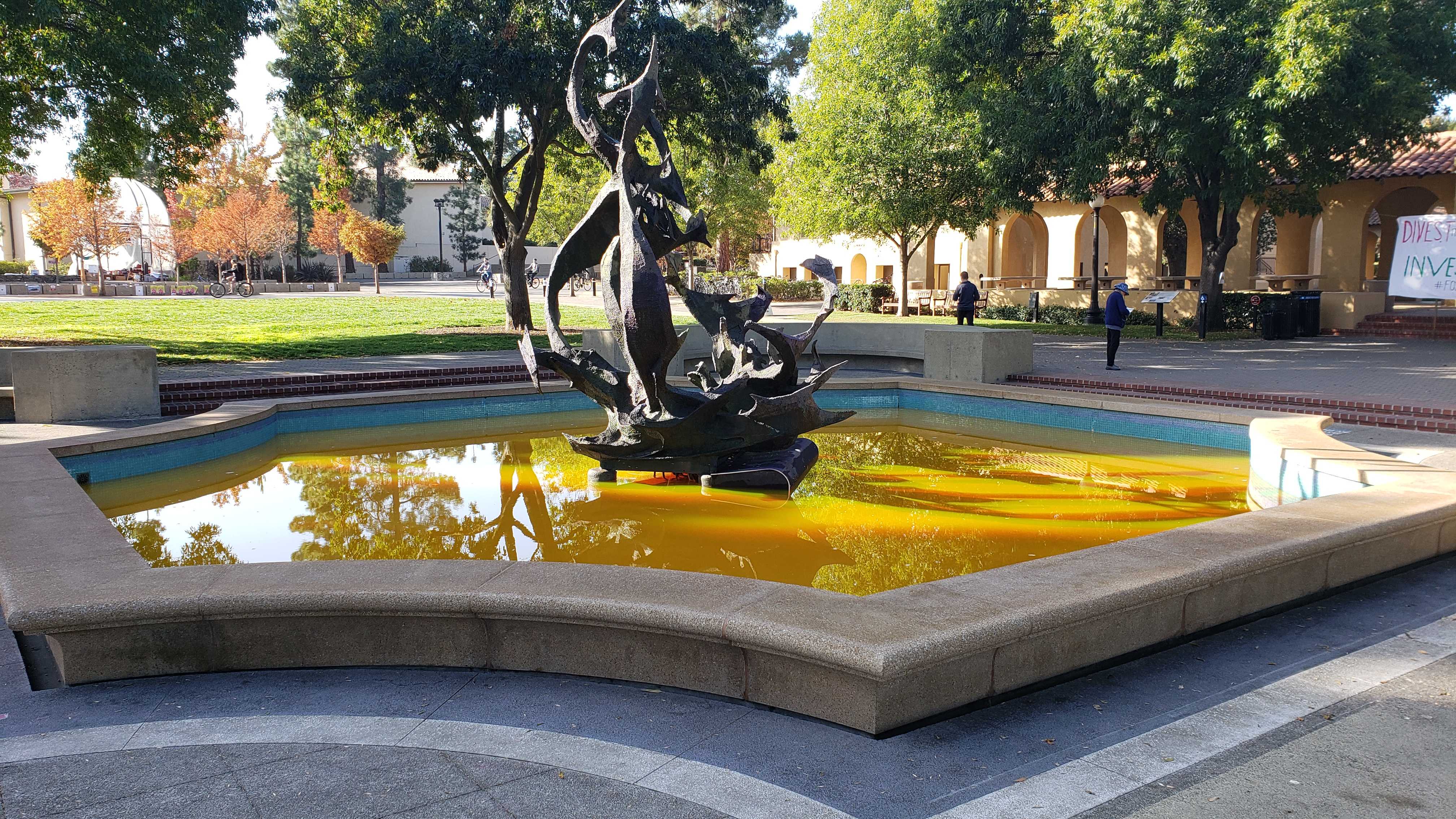Students who woke up early enough on Friday might have discovered that the campus’ fountains had been dyed a sickly orange by activists from Fossil Free Stanford. The dye was used to represent “the oil spills and toxic waste that goes into our waters through the fossil fuel industry,” according to Fossil Free organizer Sadie Thompson ’22.
Accompanying the dye were posters asking Stanford to “divest from destruction, invest in our future” and telling students that while “Stanford earns, the world burns.” The fountains were turned off so that the water could be removed and replaced.
Fossil Free is a student group pushing Stanford to divest from fossil fuel companies. Founded in 2012, the group successfully advocated for coal divestment in 2014 and now wants to shift that success to broader fossil fuel divestment.
The timing of these efforts during Big Game week, when fountains are traditionally dyed red, was not coincidental.
Justin Wilck ’20, a Fossil Free organizer, said the group had “intentionally chosen a non-staining dye and are conscious of the fact that there’s a lot of labor that goes into maintaining the fountains by people who aren’t the administration. That’s why we’ve tried to coordinate dyeing the fountains with Big Game week, when they’re already dyed.”
Axe Committee (AxeComm) Chairman Alex Bradfield ’21 acknowledged that Fossil Free had spoken with AxeComm prior to dyeing the fountains, but he declined to comment on whether AxeComm had approved the act.
Bradfield confirmed that the fountains were dyed by AxeComm out of tradition, and he added that “we respect people standing up for what they believe in at Stanford.”
Wilck noted that Fossil Free was not trying to disrupt AxeComm’s tradition of dying the fountain, but that the group was instead trying to raise awareness of Stanford’s fossil fuel investment.
“Since it’s something that fundamentally constitutes our educational institution, that makes bringing visibility to it during this week against Cal, especially in the context of UC system divestment, important,” Wilck said.
The Universities of California divested from fossil fuels in September.
While Fossil Free has not received a formal response from the University on divestment, Board of Trustees Chair Jeff Raikes ’80 said in October that a task force has been established that “will engage with [Fossil Free] and with others in the University community to listen and understand the underpinnings of [Fossil Free’s] proposal more deeply.”
Wilck concluded that while the group did not think the fountain dyeing would put pressure on the University’s administration to divest, he did hope it would spread awareness.
“Whether or not the impact will be felt by administration is an open question,” he said. “But [the dyeing] creates potential for us to engage with students, community members, and whoever passes by the fountain.”
By noon, no trace of the dye was left in most fountains, and University employees could be seen dragging nets through the orange water beneath the Claw, cordoned off with caution tape.
This article has been corrected to reflect that Sadie Thompson is a Fossil Free Organizer, not Sadie Cwikiel.
